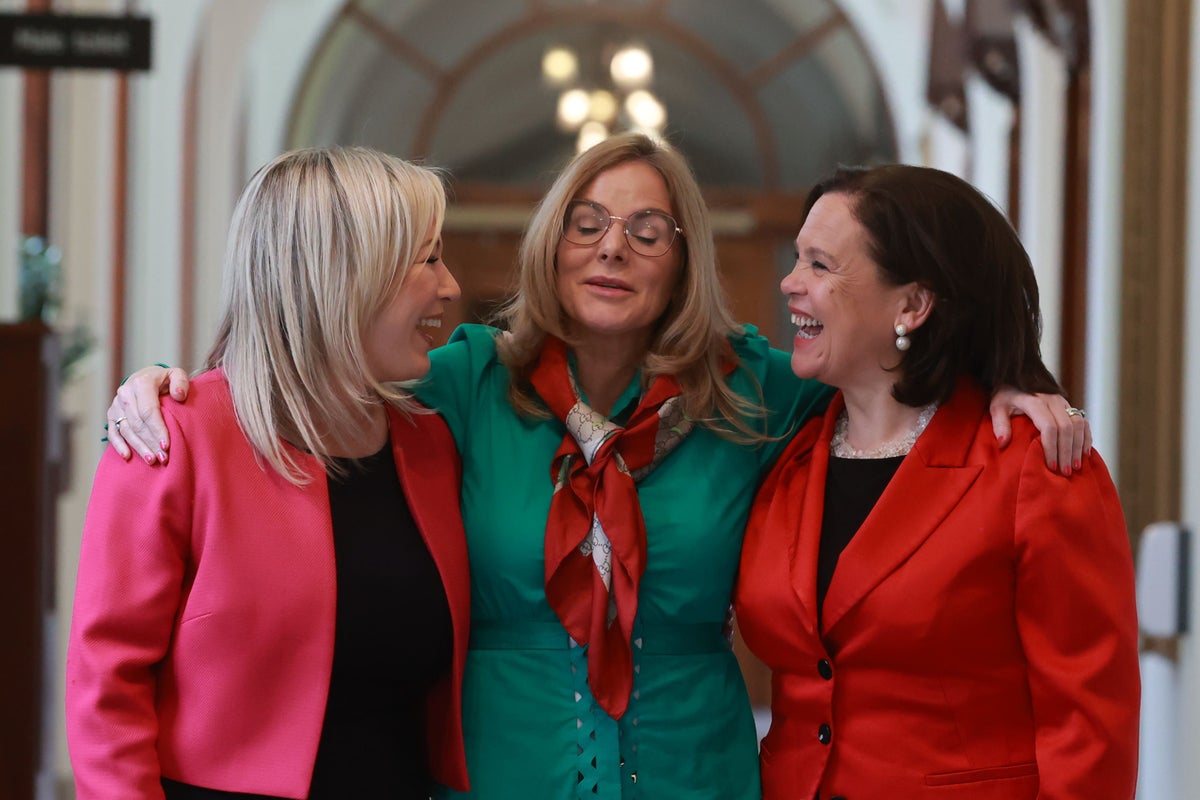
Rarely has any election campaign been quite so dominated by the fallout from the result of a poll which took place a full year before.
Sinn Fein chose to make the 2023 council elections all about the fact that its vice president, Michelle O’Neill, has been prevented from taking up the position of First Minister at Stormont – and is set to deliver another historic victory.
A year ago the republican party moved the tectonic plates of politics in Northern Ireland when it became the largest party at Stormont for the first time.
After adopting the tactic this time around of inviting voters to register their protest at DUP actions in continuing the Stormont stalemate, Sinn Fein is on course to emerge as the largest party in councils as well.
The party ran 162 candidates for the 11 council areas, but it was Stormont leader Ms O’Neill’s face which appeared most often on posters at the roadside.
The now familiar phrase of “first minister for all” was rolled out again and again. Sinn Fein said it was putting this philosophy into action when Ms O’Neill attended the coronation of the King at Westminster Abbey just weeks before the council poll.
The growth of Sinn Fein was reflected in the fact that it secured victories in areas in which it had not previously been strong, such as Ballymena, and became the largest party in Armagh, Banbridge and Craigavon.
It has also rebounded from a disappointing result last time in Derry and Strabane and looks on course to again be the largest party at Belfast City Hall.
But the party’s message that voters in Northern Ireland are telling politicians at Stormont to get back to work is complicated by the fact that the DUP has largely held its ground in this election.
The party which collapsed the powersharing institutions last year in protest at post-Brexit trading arrangements, has reaffirmed its position as the dominant force in unionism and mostly balanced out any losses by gains in other areas.
Sir Jeffrey Donaldson told voters that he would not weaken his stance on re-entering devolved government until his concerns about the Windsor Framework are met, and will claim to have secured a new mandate for that view.
Faced with being overtaken by Sinn Fein as the largest party in councils, Sir Jeffrey raised concerns about lower voter turnout in unionist areas. In short, he believes the republican party is proving to be better at getting its core vote out.
The cross-community Alliance Party, led by Naomi Long, has made gains in the election, but not as dramatically as it did in last year’s Assembly election.
However, if it succeeds in overtaking both the UUP and SDLP when all the ballots are counted, it will be satisfied that it has reaffirmed its position as the third force in Northern Ireland politics.
As expected, the election proved to be difficult for both the Ulster Unionists and the SDLP, once the two dominant parties in the region.
The parties led by Doug Beattie and Colum Eastwood both suffered significant losses and each seem further away than ever from finding any way to challenge the hegemony of Sinn Fein and the DUP.
While the TUV increased its vote, some of the other smaller parties such as the Greens, People Before Profit and Aontu were squeezed.
While the election is now close to settled, what is less clear is what it will all mean.
The 462 newly elected councillors will hold their first meetings across 11 councils in coming weeks. However, the larger question will be when Stormont will next meet.
Sinn Fein will use its updated mandate to call for direct action from the British and Irish governments to ensure that happens sooner rather than later.
However, by again holding off the challenge of the UUP and the TUV, DUP leader Sir Jeffrey may feel emboldened as he continues to seek to attempt to have his trading and political concerns met by the British Government following the publication of the Windsor deal earlier this year.
The DUP leader has insisted time and again that he wants to see Stormont return, but will only allow this to happen when the conditions are right.
The new electoral landscape is now becoming clear, but the political future for Northern Ireland remains as uncertain as ever.







